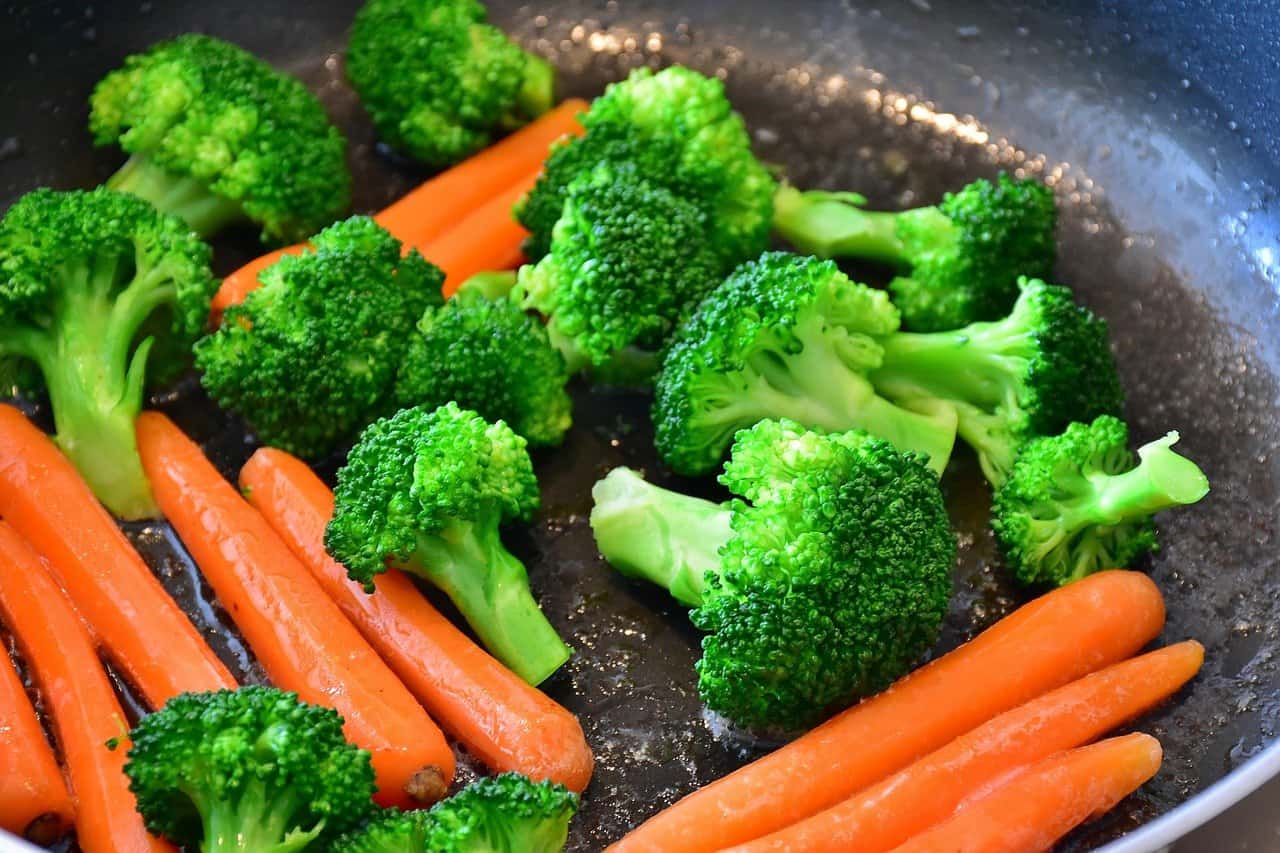Vegetables are an essential part of a person’s daily diet; however, vegetables tend to lose their flavor, texture, nutrient content, and color when not cooked properly. Therefore, learning how to cook vegetables to retain their color is key to ensuring vegetables keep their nutritional value.
It is best to use as little water as possible when wanting vegetables to retain their colors while cooking. Cover yellow, red, and orange vegetables while cooking, but leave green and white vegetables uncovered. Use short cooking times to soften the vegetable fibers while retaining all nutrients, flavor, and color.
Why do vegetables change color while cooking or when cooked?
Vegetables lose color when cooked because they contain water-soluble nutrients, such as vitamin B and C. These nutrients leach out of the vegetables into the water they are cooked in, resulting in color change.
For green vegetables, the heat causes the magnesium atom within the chlorophyll molecule to detach and replaces it with a hydrogen atom. As a result, the heat causes green leafy vegetables to turn gray-green when overcooked.
How to cook vegetables without losing color
There are several ways to cook vegetables to help them retain their color. The best method is to cook it al dente, which essentially means “undercooked.” Commonly used for cooking pasta, cooking vegetables al dente means cooking them just enough to release nutrients when eaten while remaining firm and full of color.
Microwave
The microwave cooks vegetables faster than the stovetop or oven. Therefore, when cooking vegetables in the microwave, it is best to use little to no water. In addition, since the microwave cooks vegetables fast, this is an excellent method to help vegetables retain their color.
Steam
Steaming vegetables is another one of the best methods to cook vegetables to help them retain their color. The best vegetables for steaming include asparagus, carrots, broccoli, spinach, and summer squash. To steam, place a little water in a pot and use a vegetable steamer or colander to position the vegetables above the water. Cover the pot and bring the water to a boil. To preserve color and vitamins, cook vegetables until they are just tender yet still crisp.
Using a pressure cooker to steam vegetables works well for roots, tubers, and dried legumes. These vegetables typically take longer to cook, and the pressure cooker helps speed up the steaming process. However, follow all directions for steaming vegetables closely because overcooking in the pressure cooker can quickly occur.
Pan
Cooking vegetables in a pan is easy and requires little to no water. One method when cooking in a pan is to use the steam formed by the vegetable’s juices. To cook, place the vegetables in the pan and cover with a tight-fitting lid for about five to eight minutes, or until the vegetables are tender-crisp. Then, if desired, you can add a small amount of water or cooking oil to the pan.
The best vegetables for pan cooking are shredded cabbage, sliced summer squash, most leafy greens, sliced green beans, and carrots.
Stir Fry
Stir-frying vegetables is quick and easy and another method to help preserve the vegetables’ crisp texture and bright color. Use a heavy skillet or wok with a bit of oil coating the bottom of the pan. Heat the oil and slowly add vegetables, stirring constantly. When cooked, the vegetables will be tender-crisp, bright, and glossy.
Baking
The dry heat from the oven helps preserve the vitamins, minerals, flavor, and color of vegetables. Baking vegetables is the best cooking method for potatoes, onions, and winter squash. Thoroughly wash vegetables, prick their skins, and place them on a baking sheet in the oven.
Boil
Boiling vegetables is a standard method to cook them; however, it can leave vegetables soggy and dull if not done correctly. To boil, place vegetables in a pot and cover with water. Bring to a boil and cover. Cook until vegetables are tender and immediately drain and run under cold water to prevent further cooking.
Disadvantages of using sodium bicarbonate when cooking vegetables
It was once believed that adding baking soda – sodium bicarbonate – when cooking vegetables helps preserve the color. However, this is an old-fashioned practice used when it was recommended to boil vegetables to death. Unfortunately, adding baking soda when cooking vegetables can have some very harmful effects.
First, baking soda adds sodium, which is a harmful component of salt. Secondly, it destroys a lot of the vitamin C and vitamin B1 in vegetables. So ultimately, adding sodium bicarbonate when cooking vegetables can help preserve color while sacrificing the health benefits of the vegetables.
Additionally, there is a low toxic risk to consuming sodium bicarbonate but can cause weight gain from the additional sodium. Finally, baking soda can cause kidney damage, severe headaches, nausea, loss of appetite, and vomiting at higher doses.
Which method of cooking vegetables is the best way to retain their color?
There are several methods used to cook vegetables that help allow them to retain their color. However, the two best methods for cooking colorful vegetables are in the microwave and using a steamer pot.
Microwave
Microwaving vegetables provides a quick-cooking method with little to no exposure to water or other liquids. At most, you should only add a few tablespoons of water to the microwave-safe cooking dish. Cook vegetables on high in a covered dish until tender. Stop halfway through the cooking cycle to stir vegetables and check their tenderness. The microwave helps soften vegetable fibers while still retaining their color.
Steaming
Steaming is another cooking method that provides optimum flavor while preserving the color of vegetables. Place a small amount of water in the bottom of a pan and set a steamer basket or colander above the water. Place vegetables in the steamer basket, cover, and bring water to a boil. Cook vegetables until they are tender, and remove them from the basket to prevent further cooking.
Conclusion
Cooking vegetables changes the texture, flavor, nutrient content, and color of the vegetable. Cooking at higher temperatures for a shorter period helps make vegetables tender while preserving their bright color. However, be careful not to overcook vegetables, making them lose nutritional value and appear soggy and dull

